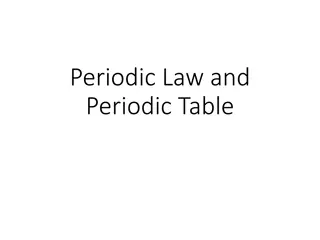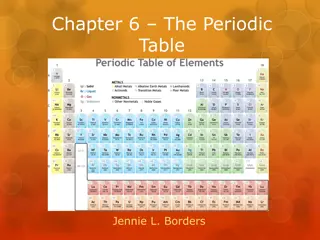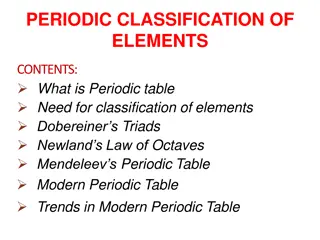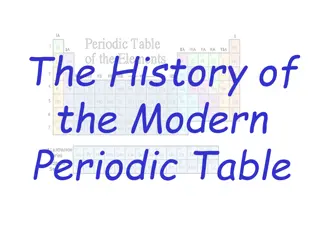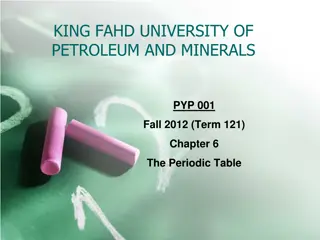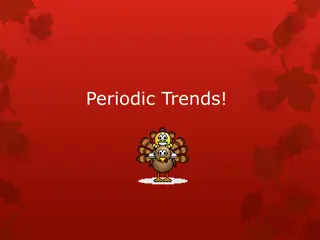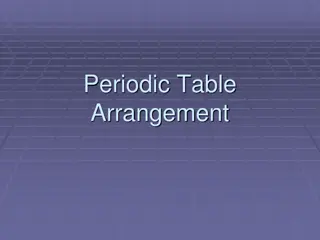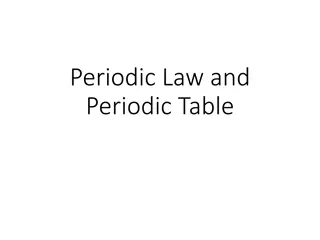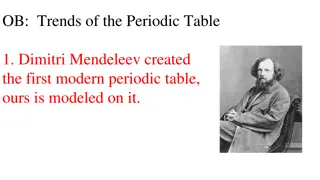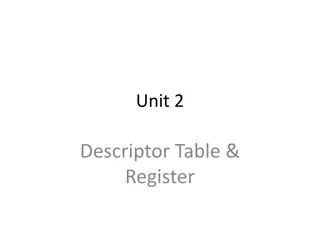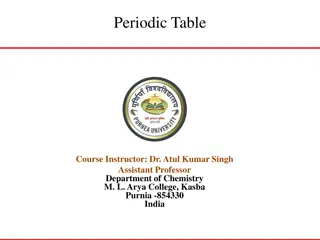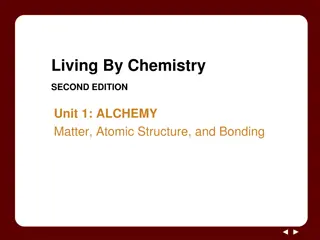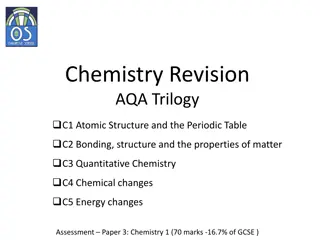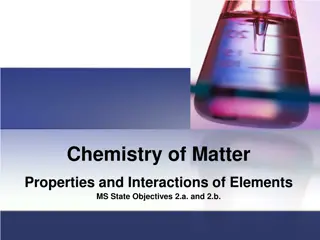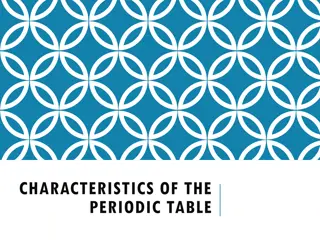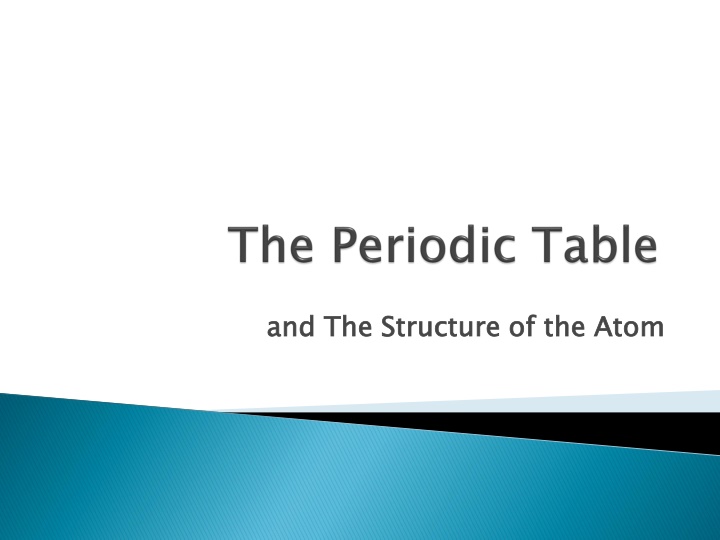
The Atomic Structure and Periodic Table Elements
"Explore the structure of atoms, trends in the periodic table, properties of metals and nonmetals, different groups of elements like alkali metals, noble gases, and halogens. Learn about isotopes of carbon and neutron calculations."
Download Presentation

Please find below an Image/Link to download the presentation.
The content on the website is provided AS IS for your information and personal use only. It may not be sold, licensed, or shared on other websites without obtaining consent from the author. If you encounter any issues during the download, it is possible that the publisher has removed the file from their server.
You are allowed to download the files provided on this website for personal or commercial use, subject to the condition that they are used lawfully. All files are the property of their respective owners.
The content on the website is provided AS IS for your information and personal use only. It may not be sold, licensed, or shared on other websites without obtaining consent from the author.
E N D
Presentation Transcript
and The Structure of the Atom and The Structure of the Atom
a chart in which elements having similar chemical and physical properties are grouped together Periodic law arranged in the order of their atomic numbers show a periodic variation of atomic structure and of most of their properties Periodic law - the elements when This law was formulated by Dmitri Mendeleev in 1869.
Properties of metals and nonmetals Properties of metals and nonmetals A metals electricity A nonmetals the heat and electricity A metalloid intermediate between those of metals and nonmetals metals is a good conductor of the heat and A nonmetals is usually a poor conductor of A metalloid has properties that are
The majority of known elements are metals. Only 17 elements are nonmetals, and 8 elements are metalloids.
The Group 1A elements (Li, Na, K, Rb, Cs, Fr) are called alkali metals alkali metals
The Group 2A elements (Be, Mg, Ca, Sr, Ba, Ra) are called alkaline earth metals alkaline earth metals
The Group 7A elements (F, Cl, Br, I, At) are called halogens halogens
The Group 8A elements (He, Ne, Ar, Kr, Xe, Rn) are called noble gases noble gases, or , or rare gases rare gases
How many neutrons are in the following isotopes of carbon?
mass number mass number atomic number atomic number
Determine the numbers of protons, neutrons, and electrons in each of the following species: (a) Determine the numbers of protons, neutrons, and electrons in each of the following species: (b) (c) (d) Carbon Carbon- - 14 14
Recall that the superscript denotes the mass number ( atomic number ( Recall that the superscript denotes the mass number (A), and the subscript denotes the atomic number (Z). A), and the subscript denotes the Z). In the case where no subscript is shown, as in parts (c) and (d), the atomic number can be deduced from the elemental symbol or name. For the purpose of determining the number of electrons, remember that atoms are neutral, so the number of electrons equals the number of protons. atoms are neutral, so the number of electrons equals the number of protons.
Number of protons = Z, number of neutrons = A and number of electrons = number of protons. Number of protons = Z, number of neutrons = A - - Z, and number of electrons = number of protons. Z, Recall that the 14 in carbon number (A). carbon- -14 14 is the mass
(a) The atomic number is 17, so there are 17 protons. The mass number is 35, so the number of neutrons is 35 - 17 = 18. The number of electrons equals the number of protons, so there are 17 electrons. p+=17 e-= 17 n0= 18
(b) Again, the atomic number is 17, so there are 17 protons. The mass number is 37, so the number of neutrons is 37 17= 20. The number of electrons equals the number of protons, so there are 17 electrons, too. p+=17 e-= 17 n0= 20
(c) The atomic number of K (potassium) is 19, so there are 19 protons. The mass number is 41, so there are 41- 19 = 22 neutrons. There are 19 electrons. p+=19 e-= 19 n0= 22
(d) Carbon-14 can also be represented as 14C. The atomic number of carbon is 6, so there are 6 protons and 6 electrons. There are 14 - 6 =8 neutrons. p+=6 e-= 6 n0= 8
An atomic ion or monatomic ion is one that consists of just one atom with a positive or negative charge.
The loss of one or more electrons from an atom yields a cation positive cation, an ion with a net charge. , an ion with a net positive charge For example, a sodium atom (Na) can readily lose an electron to become a sodium cation, which is represented by Na:
An anion is an ion whose net charge is negative due to an increase in the number of electrons. anion is an ion whose net charge is negative due to an increase in the number of electrons. A Chlorine atom (Cl), for instance, can gain an electron to become a chloride ion (Cl Cl- -): ):
Sodium chloride (NaCl), ordinary table salt, is called an ionic compound because it consists of ionic compound because it consists of cations (Na) and anions (Cl).
The following table gives numbers of electrons, protons, and neutrons in atoms or ions of a number of elements. Answer the following: (a) Which of the species are neutral? (b) Which are negatively charged? (c) Which are positively charged? (d) What are the conventional symbols for all the species?

